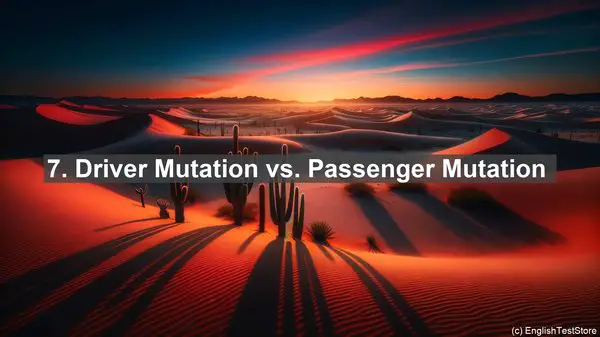Introduction
Welcome to today’s lesson on cancer genomics. In this lesson, we’ll be discussing the top 10 commonly confused words in this field. Understanding these terms is crucial for anyone studying or working in cancer research. So, let’s dive right in!
1. Mutation vs. Polymorphism
The terms ‘mutation’ and ‘polymorphism’ are often used interchangeably, but they have distinct meanings. A mutation is a permanent alteration in the DNA sequence, while a polymorphism is a variation that occurs in at least 1% of the population. Differentiating between these two is essential for accurate genetic analysis.
2. Oncogene vs. Tumor Suppressor Gene
Oncogenes and tumor suppressor genes play opposite roles in cancer development. Oncogenes promote cell growth, while tumor suppressor genes inhibit it. Understanding the functions of these genes is crucial for identifying potential therapeutic targets.
3. Genotype vs. Phenotype
Genotype refers to the genetic makeup of an organism, while phenotype is the observable characteristics resulting from that genetic makeup. In cancer genomics, understanding the relationship between genotype and phenotype is essential for predicting disease progression and treatment response.
4. Somatic Mutation vs. Germline Mutation
Somatic mutations occur in non-reproductive cells and are not passed on to offspring. In contrast, germline mutations are present in the reproductive cells and can be inherited. Distinguishing between these two types of mutations is crucial for understanding cancer heritability.
5. Exome Sequencing vs. Whole Genome Sequencing
Exome sequencing focuses on the protein-coding regions of the genome, while whole genome sequencing examines the entire genome. Both approaches have their advantages and limitations, and the choice depends on the research question at hand.

6. Copy Number Variation vs. Single Nucleotide Variation
Copy number variations involve the duplication or deletion of larger DNA segments, while single nucleotide variations are changes in individual nucleotides. Both types of variations can have significant implications in cancer, and their detection requires different analytical approaches.
7. Driver Mutation vs. Passenger Mutation
Driver mutations are directly involved in cancer development, while passenger mutations are incidental and do not contribute to tumor growth. Distinguishing between these two types of mutations is crucial for identifying key genetic events in cancer progression.
8. Precision Medicine vs. Personalized Medicine
Precision medicine involves tailoring treatments based on the genetic characteristics of a patient’s tumor. Personalized medicine, on the other hand, considers individual patient factors beyond genetics. While the terms are often used interchangeably, they have nuanced differences.
9. Biomarker vs. Diagnostic Test
A biomarker is a measurable indicator of a biological state, while a diagnostic test is a tool used to detect a specific condition. Biomarkers can be used in diagnostic tests, but not all biomarkers have diagnostic value. Understanding this distinction is crucial for developing effective diagnostic strategies.

10. Prognostic Marker vs. Predictive Marker
A prognostic marker provides information about the likely outcome of a disease, while a predictive marker indicates the likelihood of treatment response. Both types of markers are important in cancer management, but they serve different purposes.
